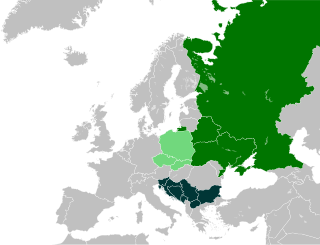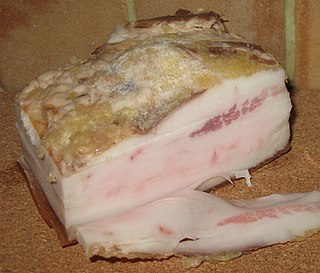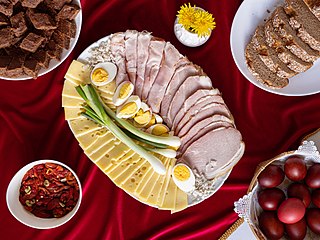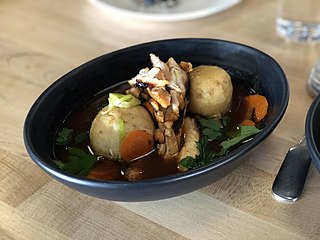
Central Europe is a geographical region of Europe between Eastern, Southern, Western and Northern Europe. Central Europe is known for its cultural diversity; however, countries in this region also share historical and cultural similarities.

Pan-Slavism, a movement that took shape in the mid-19th century, is the political ideology concerned with promoting integrity and unity for the Slavic people. Its main impact occurred in the Balkans, where non-Slavic empires had ruled the South Slavs for centuries. These were mainly the Byzantine Empire, Austria-Hungary, the Ottoman Empire, and Venice.

The Slavic languages, also known as the Slavonic languages, are Indo-European languages spoken primarily by the Slavic peoples and their descendants. They are thought to descend from a proto-language called Proto-Slavic, spoken during the Early Middle Ages, which in turn is thought to have descended from the earlier Proto-Balto-Slavic language, linking the Slavic languages to the Baltic languages in a Balto-Slavic group within the Indo-European family.
The Slavs or Slavic people are groups of people who speak Slavic languages. Slavs are geographically distributed throughout the northern parts of Eurasia; they predominantly inhabit Central Europe, Eastern Europe, and Southeastern Europe, though there is a large Slavic minority scattered across the Baltic states, Northern Asia, and Central Asia, and a substantial Slavic diaspora in the Americas, Western Europe, and Northern Europe.
Knödel or Klöße are boiled dumplings commonly found in Central European and East European cuisine. Countries in which their variant of Knödel is popular include Austria, Bosnia, Croatia, Czechia, Germany, Poland, Romania, Serbia, Slovakia and Slovenia. They are also found in Scandinavian, Romanian, northeastern Italian cuisine, Ukrainian, Belarusian and French (Alsatian) cuisines. Usually made from flour, bread or potatoes, they are often served as a side dish, but can also be a dessert such as plum dumplings, or even meat balls in soup. Many varieties and variations exist.

Pierogi are filled dumplings, made by wrapping unleavened dough around a filling, and occasionally flavored with a savory or sweet garnish, finally cooked in boiling water.

European cuisine comprises the cuisines originating from the various countries of Europe.

The West Slavic languages are a subdivision of the Slavic language group. They include Polish, Czech, Slovak, Kashubian, Silesian, Upper Sorbian and Lower Sorbian. The languages have traditionally been spoken across a mostly continuous region encompassing the Czech Republic, Slovakia, Poland, the westernmost regions of Ukraine and Belarus, and a bit of eastern Lithuania. In addition, there are several language islands such as the Sorbian areas in Lusatia in Germany, and Slovak areas in Hungary and elsewhere.

Eastern European cuisine encompasses many different cultures, ethnicities, languages, and histories of Eastern Europe.

Salo or slanina is a European food consisting of salt-cured slabs of pork subcutaneous fat with or without skin and with or without layers of meat. It is commonly eaten and known under different names across Central, Eastern and Southeastern Europe. It is usually dry salt or brine cured. The East Slavic, Hungarian and Romanian variety may also be cured with paprika or other seasonings added, whereas the South and West Slavic version is often smoked.

Smetana is the English-language name for the types of sour cream traditionally prevalent in Central, Eastern, and Southeastern Europe. It is a dairy product produced by souring heavy cream. It is similar to crème fraîche, but nowadays mainly sold with 9% to 42% milkfat content depending on the country. Its cooking properties are different from crème fraîche and the lighter sour creams sold in the US, which contain 12 to 16% butterfat. It is widely used in cooking and baking.

Ottoman cuisine is the cuisine of the Ottoman Empire and its continuation in the cuisines of Greece, Turkey, the Balkans, Caucasus, Middle East and Northern Africa.
East-Central Europe is the region between German-, Hungarian-, and West Slavic-speaking Europe and the East Slavic countries of Belarus, Russia, and Ukraine. Those lands are described as situated "between two": "between two worlds, between two stages, between two futures".

Pirog is a baked case of dough with either sweet or savory filling. The dish is common in Eastern European cuisines.

Chrain is a spicy paste made of grated horseradish. It is a common condiment for meat and fish dishes in Eastern and Central European cuisines. Chrain comes from Yiddish כריין, which is in turn a loanword from Slavic languages.

Neo-Slavism was a short-lived movement originating in Austria-Hungary around 1908 and influencing nearby Slavic states in the Balkans as well as Russia. Neo-Slavists promoted cooperation between Slavs on equal terms in order to resist Germanization, pursue modernization and liberal reforms, and wanted to create a democratic community of Slavic nations without the dominating influence of Russia.

Balkan cuisine is a type of regional cuisine that combines characteristics of European cuisine with some of those from West Asia. It is found in the Balkan Peninsula of Southeast Europe, a region without clear boundaries but which is generally considered to at least include the modern countries of Albania, Bulgaria, Turkey, Romania and Greece and the former Yugoslavia, with the possible exception of Slovenia and northern inland regions of Croatia.

Ashkenazi Jewish cuisine is an assortment of cooking traditions that was developed by the Ashkenazi Jews of Central, Eastern, Northwestern and Northern Europe, and their descendants, particularly in the United States and other Western countries.















